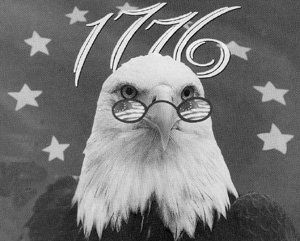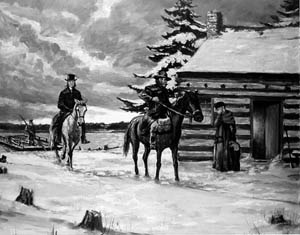|
Protestantism in the New World
Protestantism has been the dominant spiritual force in  American history for the past 300 years. 70% of the citizens of the United States consider themselves to be Protestants. Churches in the United States send missionaries out into the world, and finance hundreds of evangelistic organizations. American history for the past 300 years. 70% of the citizens of the United States consider themselves to be Protestants. Churches in the United States send missionaries out into the world, and finance hundreds of evangelistic organizations.
Freedom of Religion
The United States Constitution of 1776 offered freedom of religion, this despite the fact that Protestantism has reached a low ebb at the time, sapped of its strength by the tolerant apathy of enlightened thinkers.
The new Republic was to have no established church, with everyone free to worship God in his own way.
From the very outset, the many new denominations which had come to the New World, or sprung up there, faced a daunting task: converting a continent, nine-tenth of which was yet unsettled.
The task was undertaken with zeal, by means of revivalism and missionary evangelism. Wandering evangelists, interdenominational camp meetings, and revivals all contributed to the renewed growth of Protestantism in the New World.
Frontier Evangelism
The revival movement thrived on the American frontier, which moved westward steadily throughout the 19th century. Methodist traveling preachers, called circuit riders, preached salvation wherever they found an audience. Revivalists sought to rekindle the religious devotion of the rural population at camp meetings, the first of which was held in Kentucky in 1801.
As the frontier moved westward, ministers would gather fellow believers into a new church. Every crossroads in the American west was soon marked by a church steeple.

|
